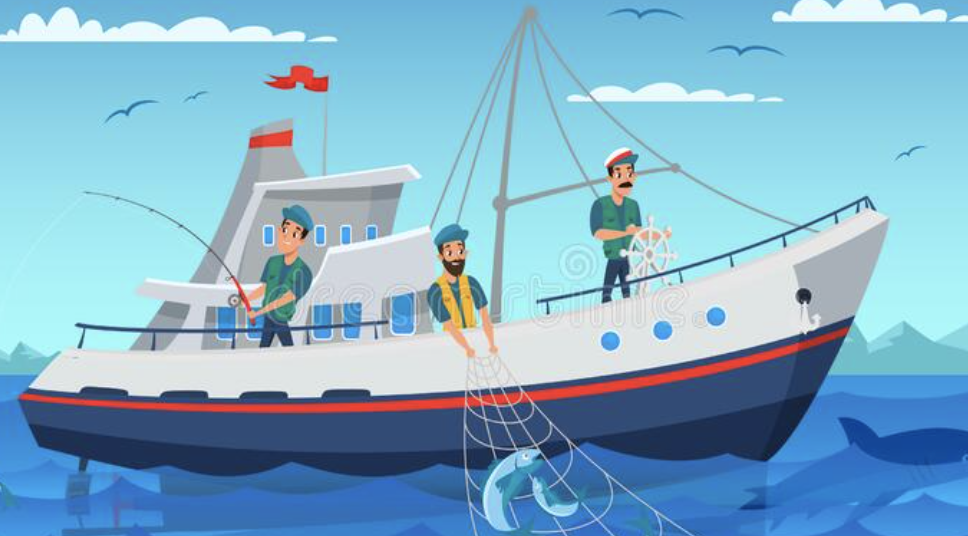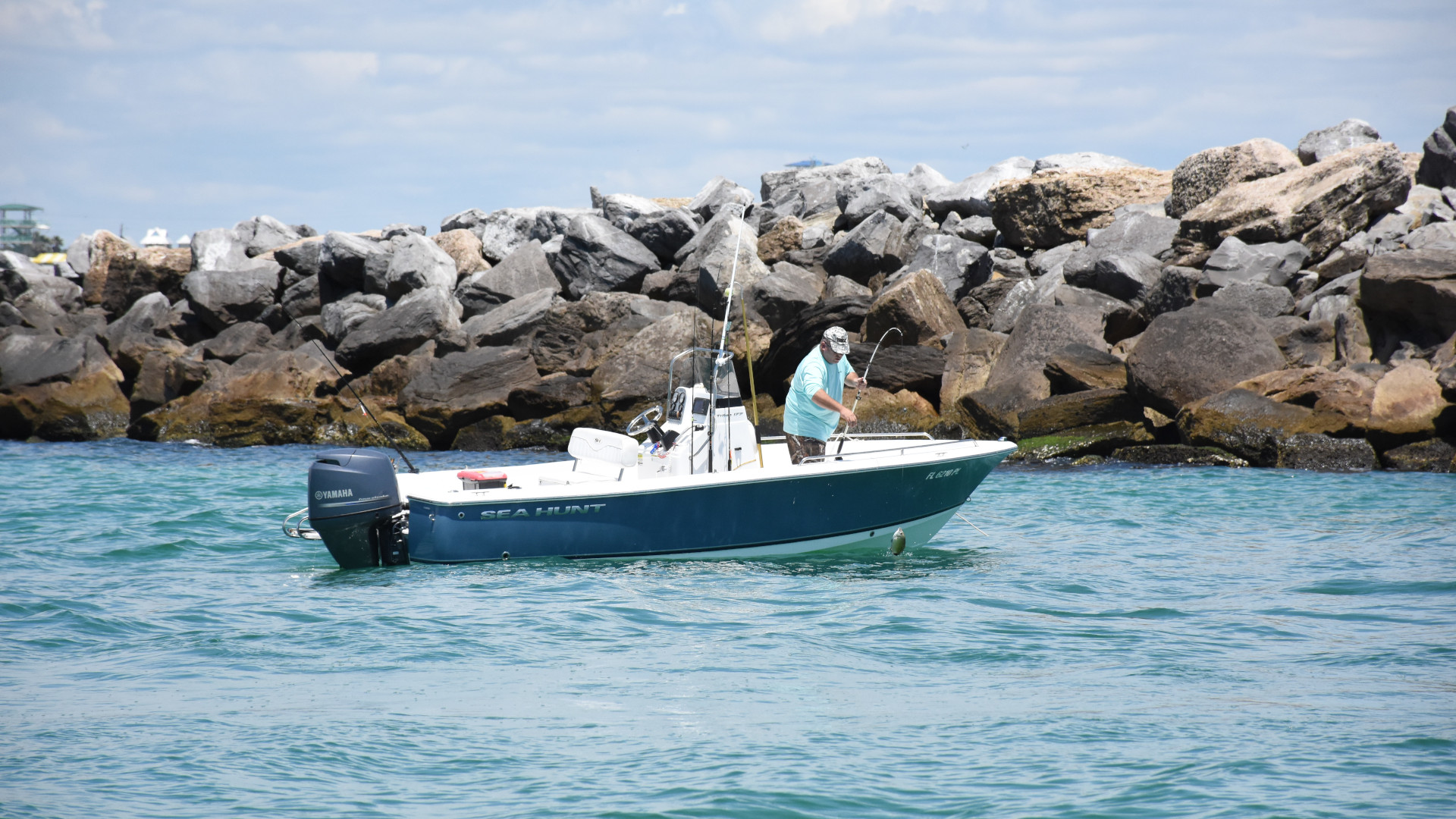Best Biodegradable Fishing Lines for a Greener Catch
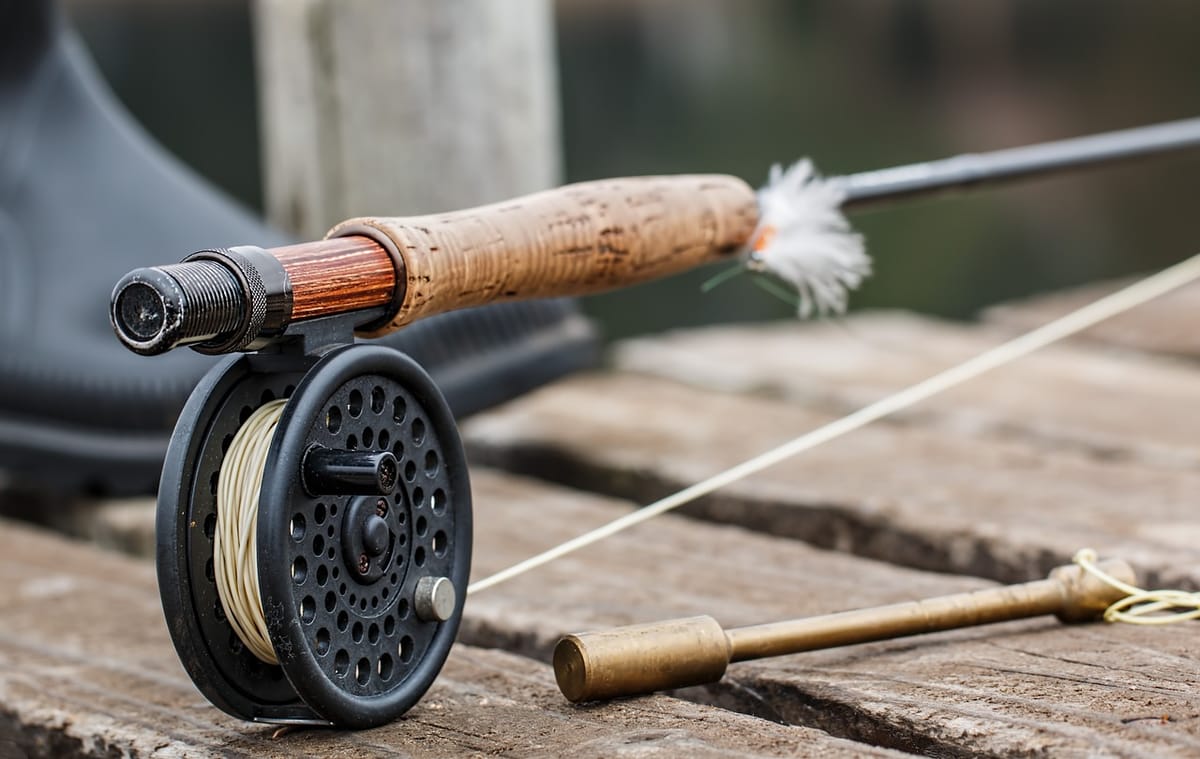
Plus Other Plastic Free Fishing Gear
Fishing is more than just a hobby – it's a way of life for many. But as our planet faces increasing environmental challenges, eco-conscious anglers are seeking ways to minimize their impact on the waters they love.
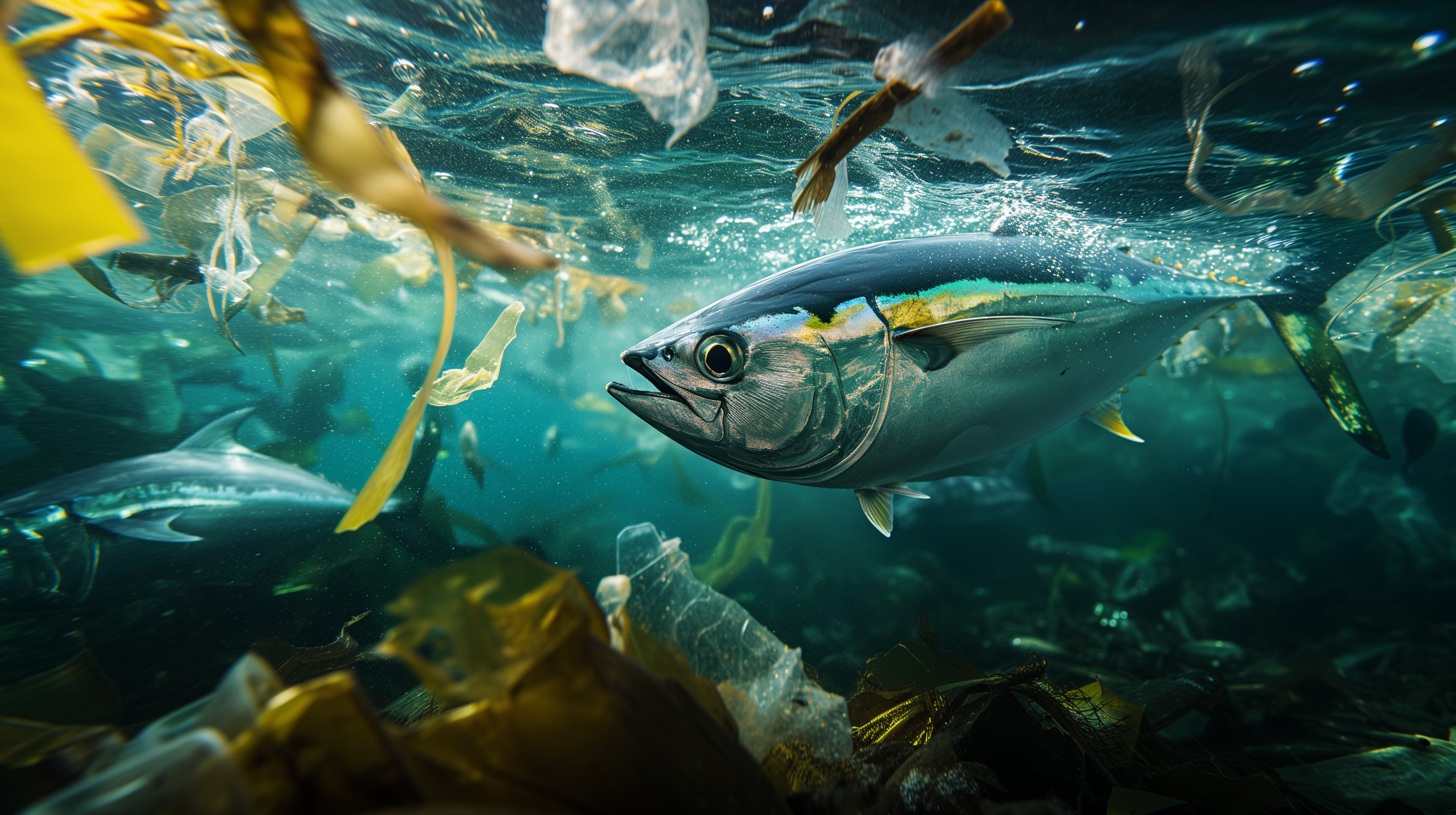
Reel in the Future Sustainable Fishing Essentials for Eco-conscious Anglers
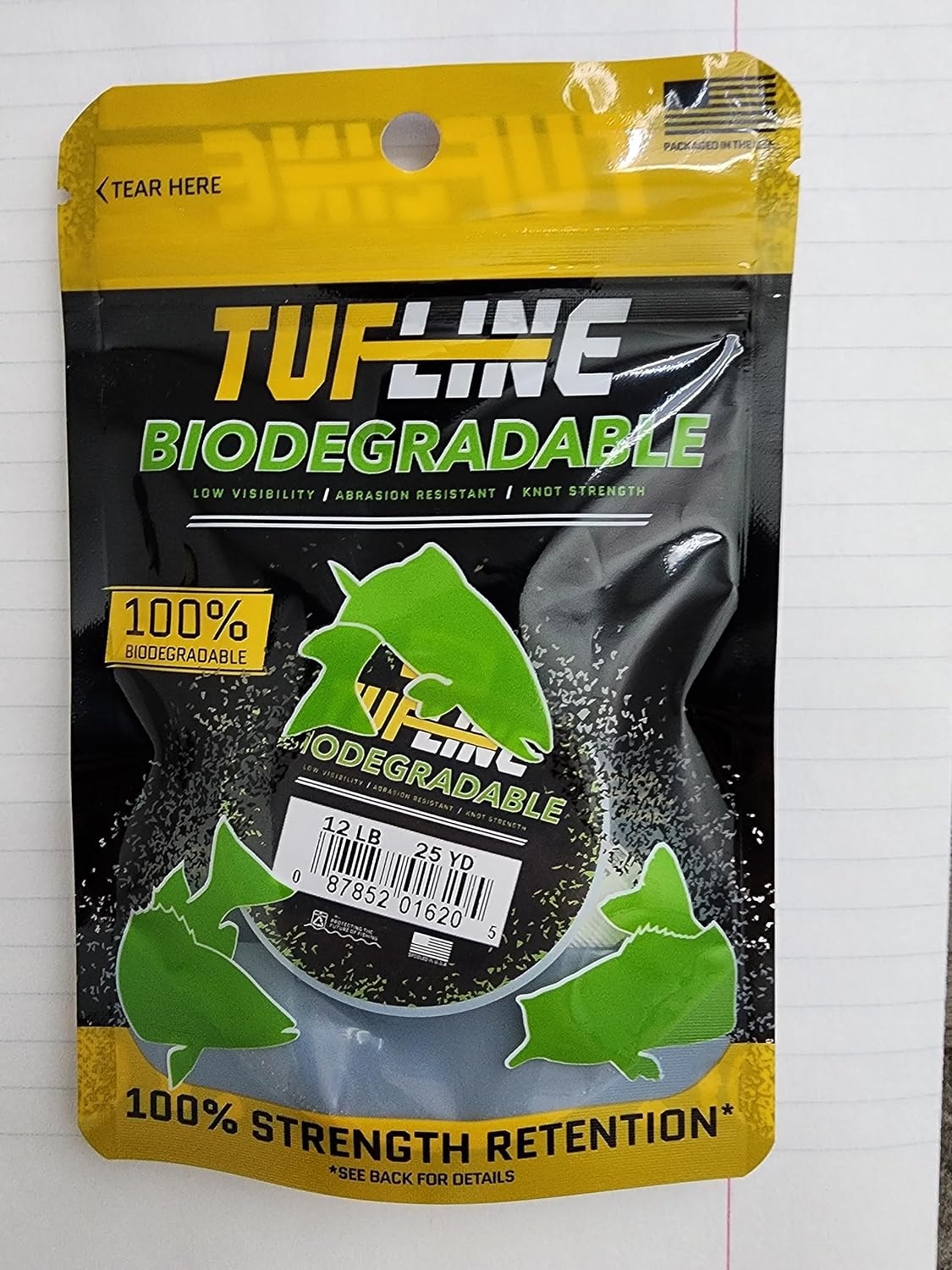
Tuff Line Store. biodegradable fishing line
This article explores the innovative world of biodegradable fishing lines and other plastic-free fishing gear. I'll share practical tips and insights to help you make more sustainable choices, ensuring that your favorite pastime doesn't harm the environment.
The Problem with Traditional Fishing Gear
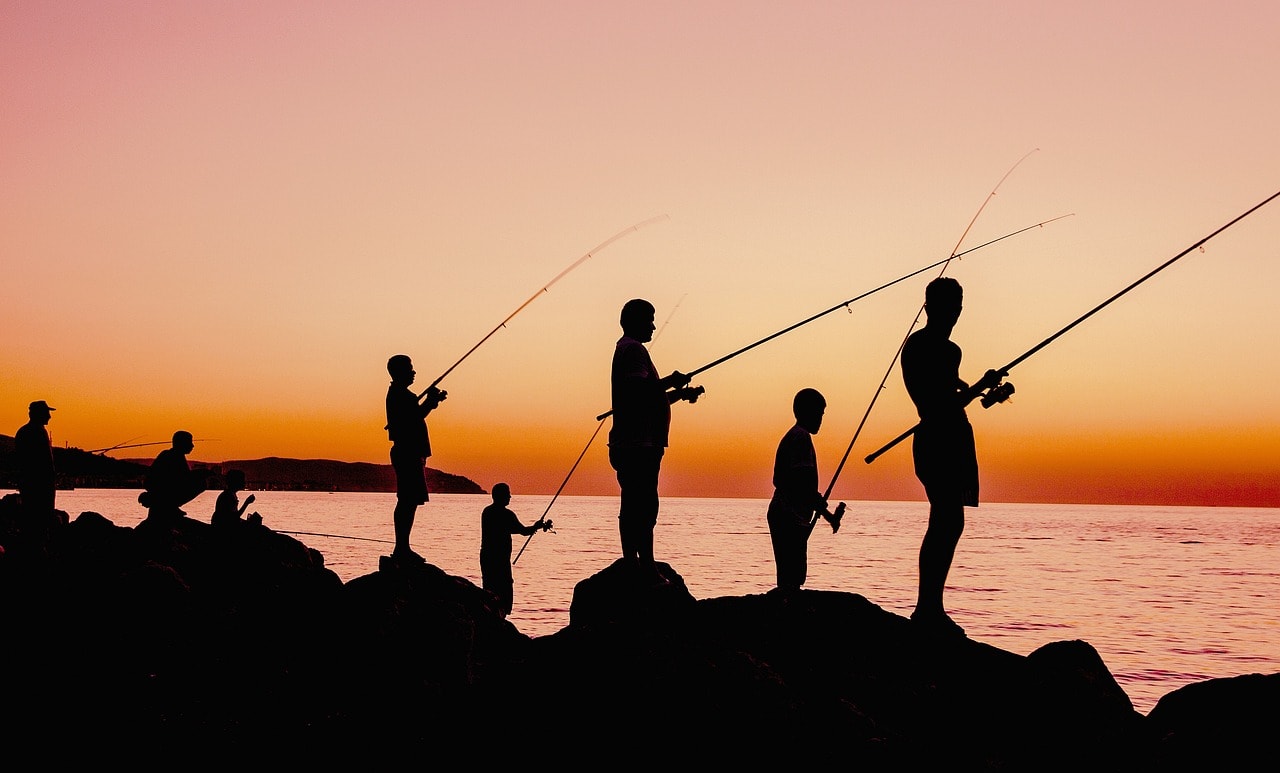
Environmental Impact of Plastic Fishing Gear
Traditional fishing gear, predominantly made from plastic, poses significant threats to marine life and ecosystems. Discarded fishing lines and nets can take hundreds of years to decompose, leading to pollution and entangling marine life, causing injury and even death. Fish, birds, and other marine creatures often mistake these plastics for food, which can be fatal.
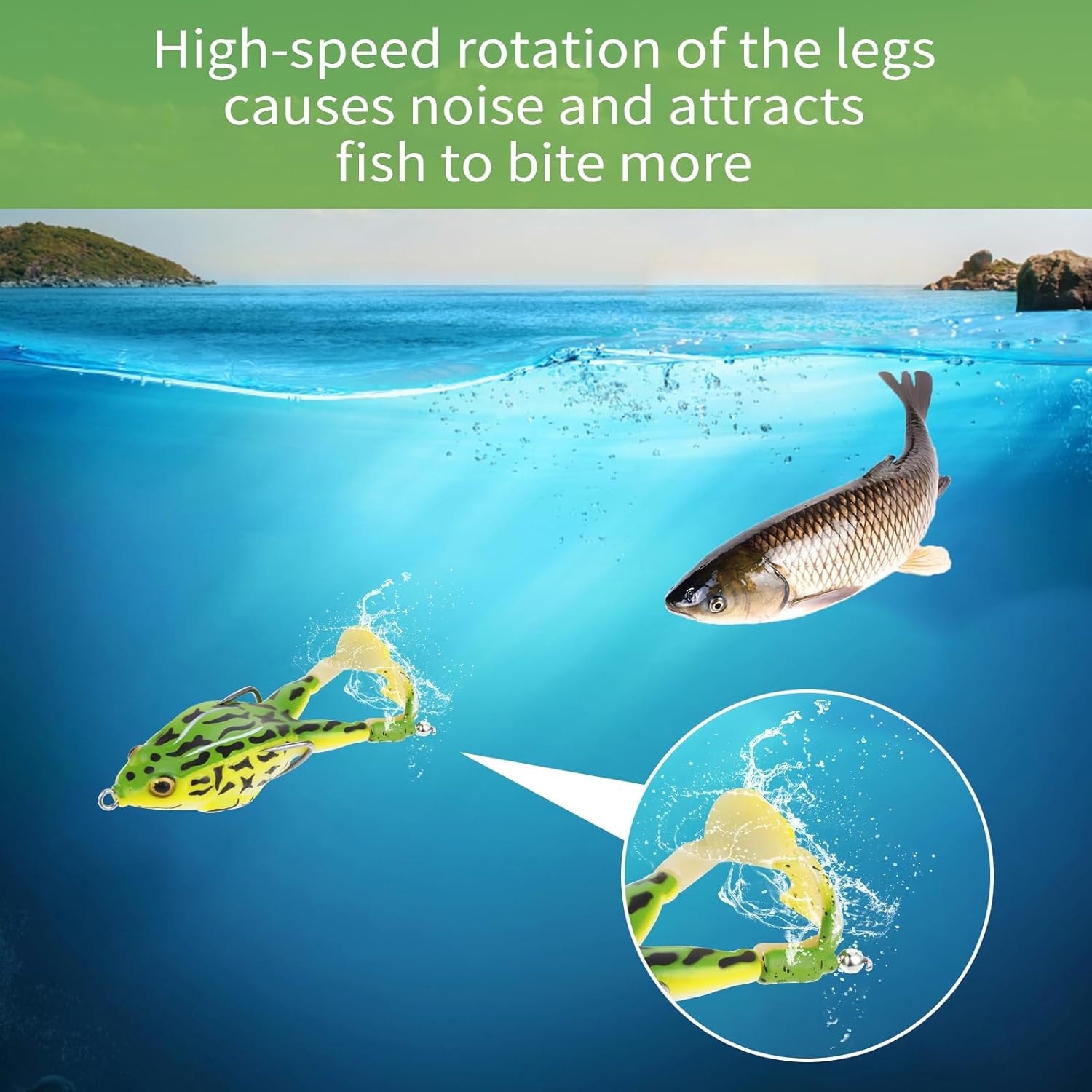
Cobee Silicone** Freswater swimbait**
Microplastics and Marine Life
When plastic fishing gear breaks down, it doesn't disappear. Instead, it fragments into smaller pieces called microplastics. These tiny particles can be ingested by marine organisms, entering the food chain and ultimately impacting human health.

Tigofly. wounded minnow feather lure
By switching to biodegradable - or at least non plastic - options, we can reduce the presence of microplastics in our oceans.
The Rise of Eco-conscious Anglers
More and more anglers are becoming aware of the environmental impact of their gear. This growing awareness is driving demand for sustainable alternatives that don't compromise on performance.
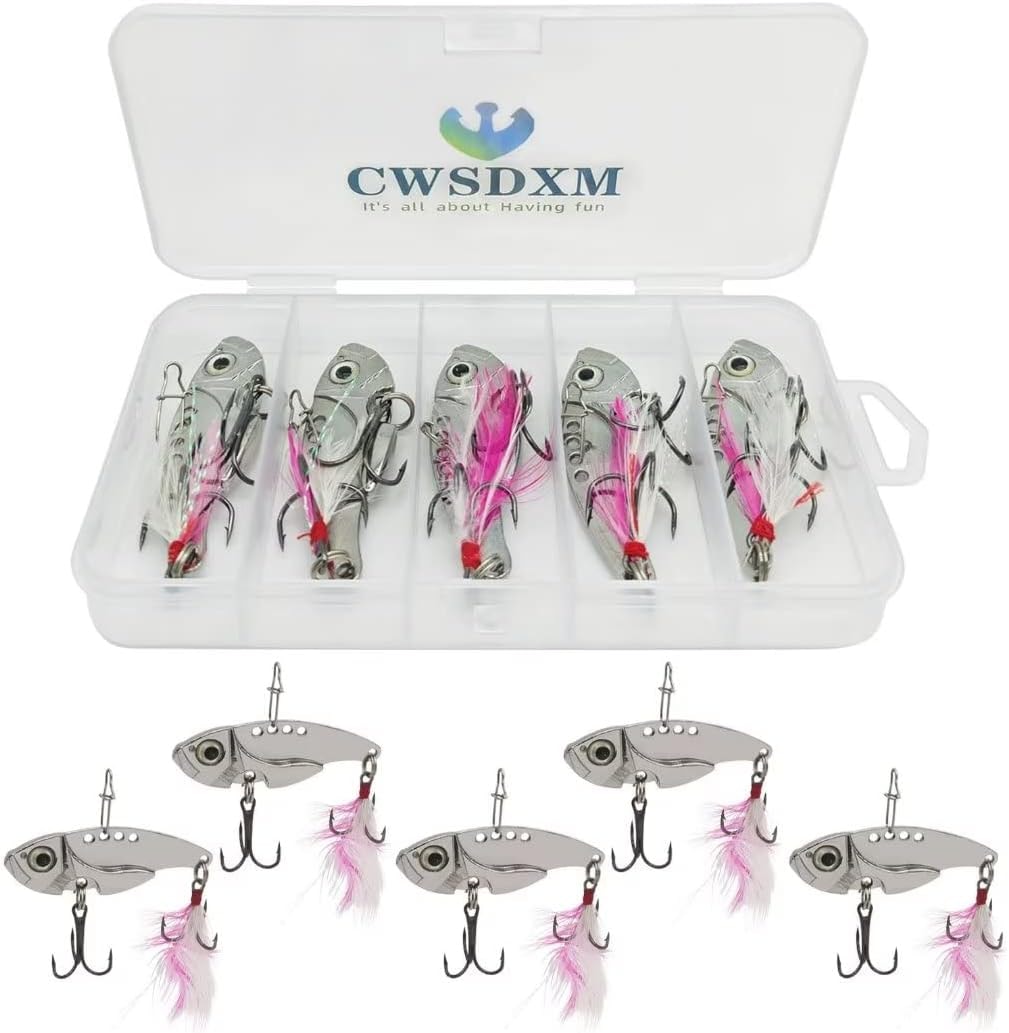
CWSOXM metal/crystal/feather fishing lures
By choosing eco-friendly gear, anglers can enjoy their sport while protecting the waters they cherish.
What is Biodegradable Fishing Line?
Composition of Biodegradable Fishing Line
Biodegradable fishing lines are made from natural materials such as silk, cotton, and certain polymers that break down more quickly than traditional plastics. The degradation process of these materials is much faster compared to traditional plastics. These materials are designed to decompose within months to a few years, reducing long-term environmental impact.
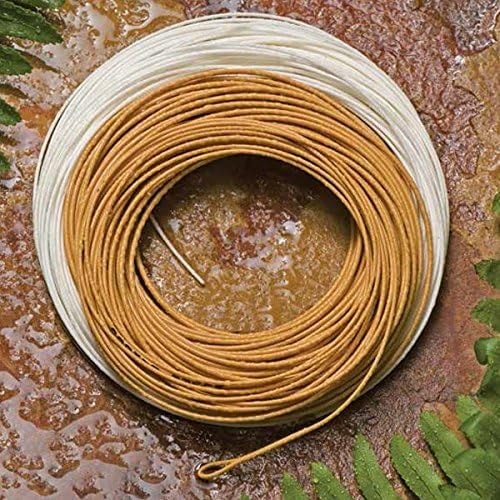
Royal Wulff. bamboo fly line
Benefits of Biodegradable Lines
Using biodegradable fishing lines offers several benefits. They break down naturally, reducing pollution and the risk of entangling wildlife. Additionally, many biodegradable lines perform just as well as their plastic counterparts, providing the strength and durability needed for successful fishing.
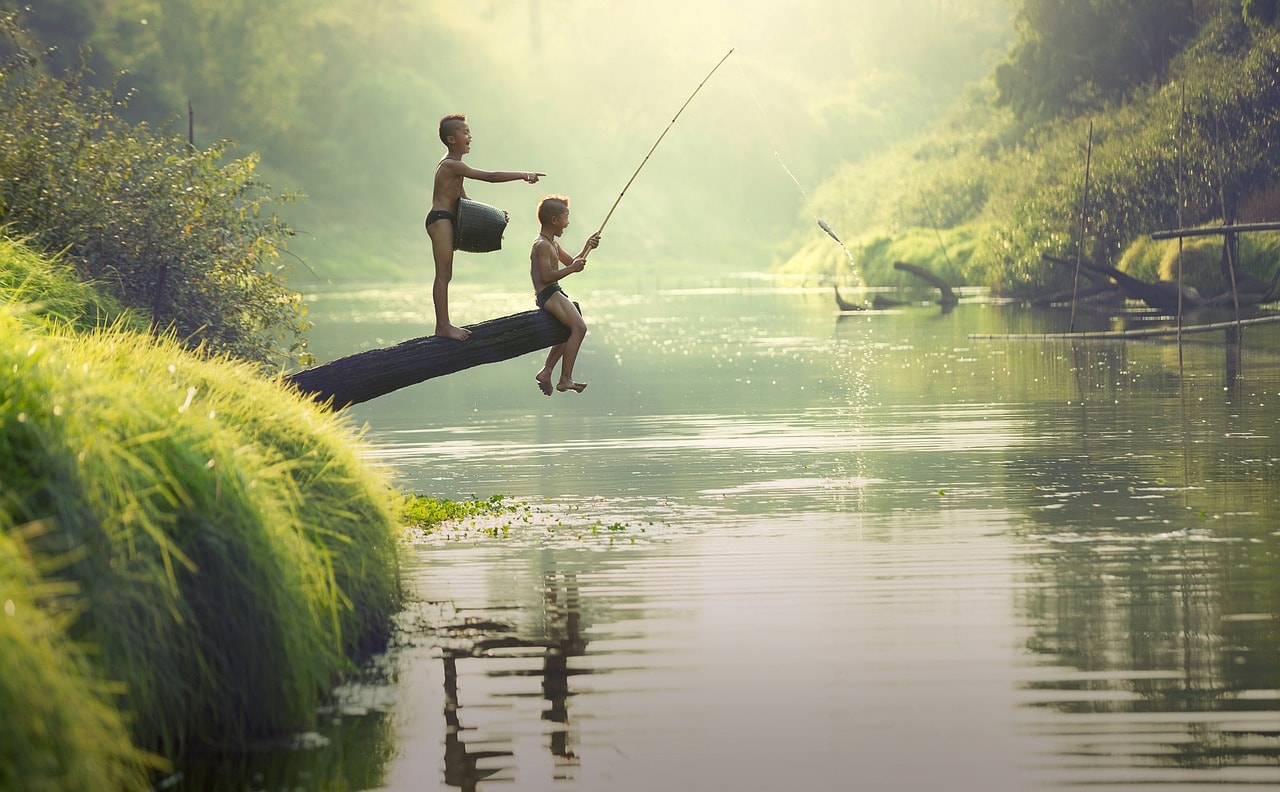
Performance Comparisons
Although some anglers may be concerned about the performance of biodegradable lines, many options available today are crafted to meet high standards.
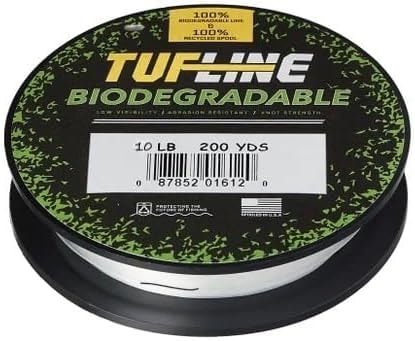
Tuf Line Store. biodegradable fishing line
They offer comparable strength, flexibility, and casting capabilities, ensuring that your fishing experience remains enjoyable and efficient.
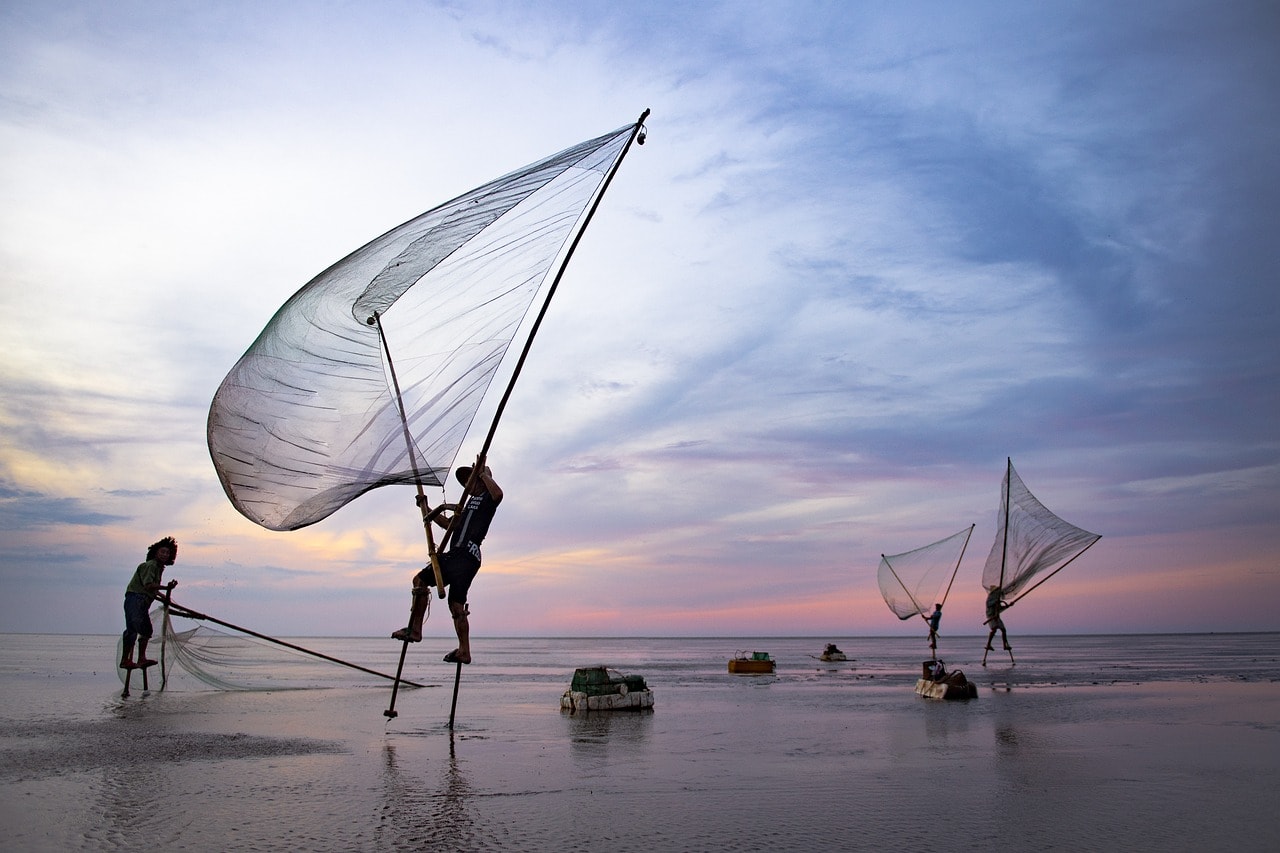
Other Plastic-free Fishing Gear
Biodegradable Fishing Nets
Fishing nets are another major contributor to marine pollution. Unfortunately most are still nylon or some other plastic based mesh.
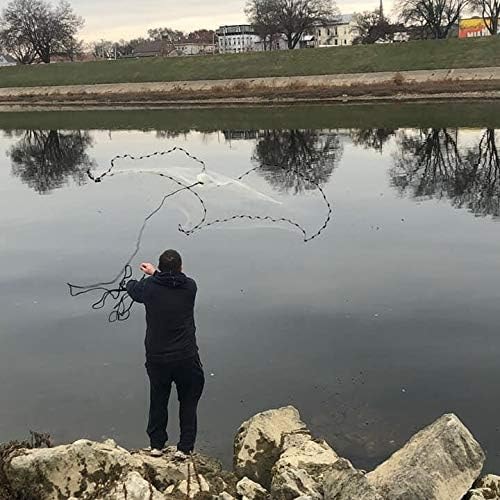
BASSDASH. makes a Stainless Steel mesh casting net
Biodegradable nets made from materials like cotton or specialized polymers can decompose naturally, preventing "ghost fishing" where lost nets continue to capture and kill marine life long after being discarded
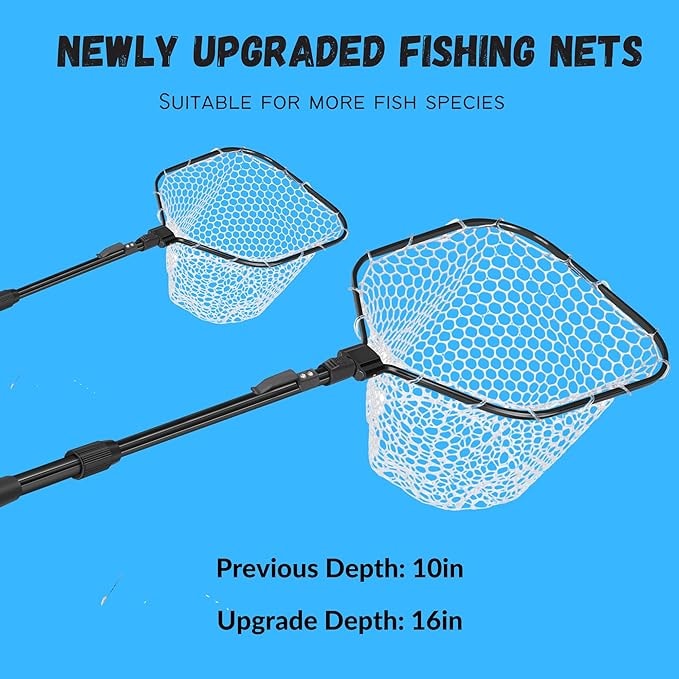
Bombrooster makes silicone mesh catching nets
Eco-friendly Hooks and Lures
Traditional fishing hooks and lures often contain harmful chemical toxins as well as a heavy load of microplastics. Eco-friendly alternatives, such as biodegradable fish hooks, treble hooks, circle hooks, and plain shank hooks made from non-toxic metals, help reduce environmental harm. Some companies even offer lures crafted from recycled materials.
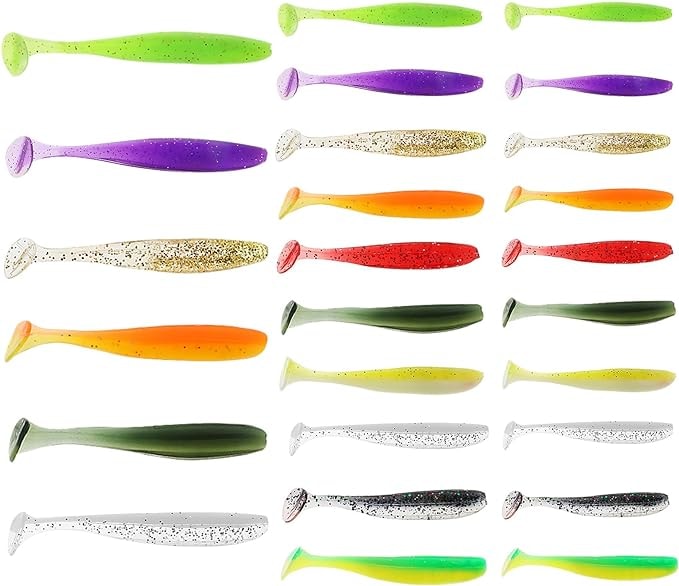
Cobee. silicone swimbait
Sustainable Tackle Boxes and Accessories
Your tackle box doesn't have to be plastic either. Some of our grandparents had better looking boxes anyway, and they lasted forever. Look for options made from sustainable materials like bamboo or recycled metals. Investing in eco-friendly accessories ensures that your commitment to sustainability extends throughout our entire fishing setup.

MAXIMUMCATCH. natural bamboo tackle box
How to Transition to Sustainable Fishing Gear
Start Small
Transitioning to sustainable fishing gear doesn't have to happen overnight. Start with small changes, such as switching to biodegradable fishing line or eco-friendly lures.
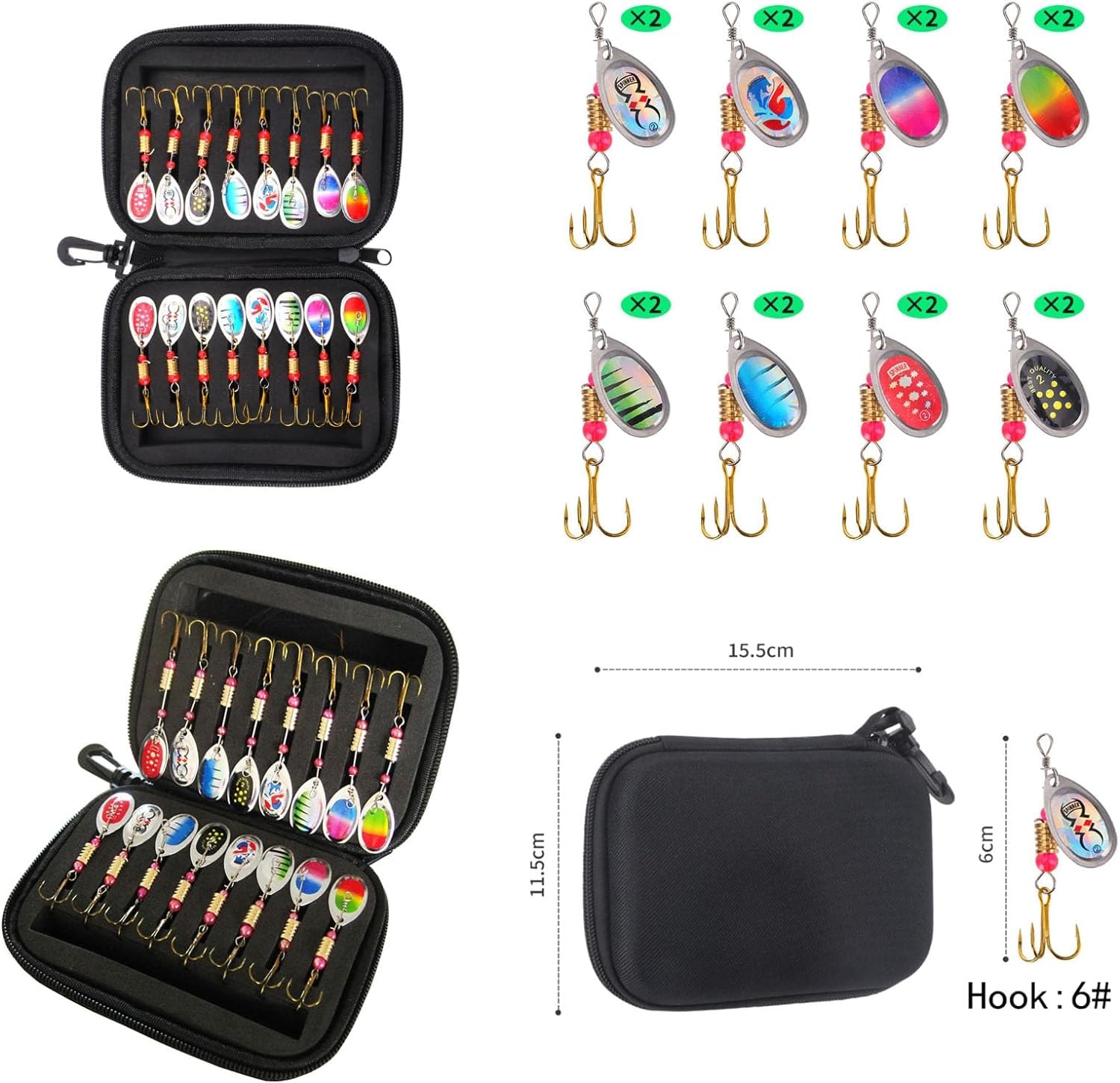
ANEEW Store. with metal lures
Gradually incorporating more sustainable options into your gear will make the process manageable and cost-effective.
Research and Reviews
Do your homework before purchasing new gear. Read reviews and research products to ensure they meet your performance needs and sustainability goals.
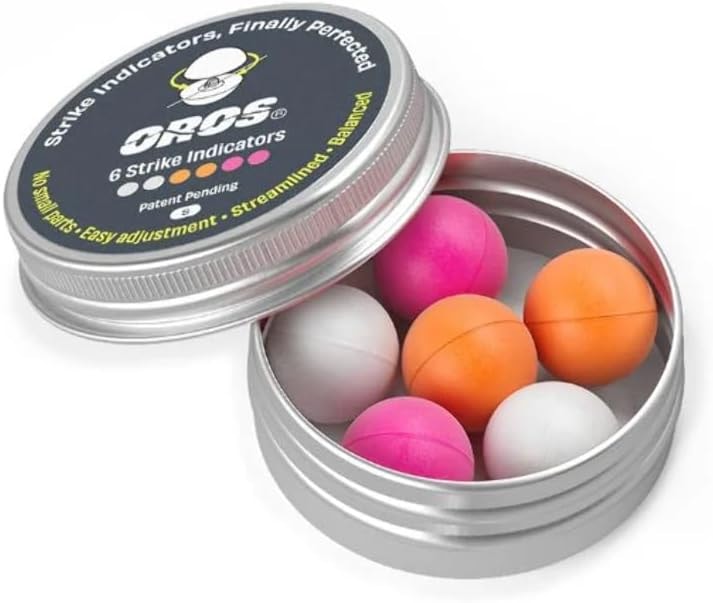
OROS. biodegradable strike indicators
Many manufacturers provide detailed information about their products' environmental impact, making it easier to make informed decisions.
Community Support
Join forums and communities of like-minded anglers who are also making the switch to sustainable gear.
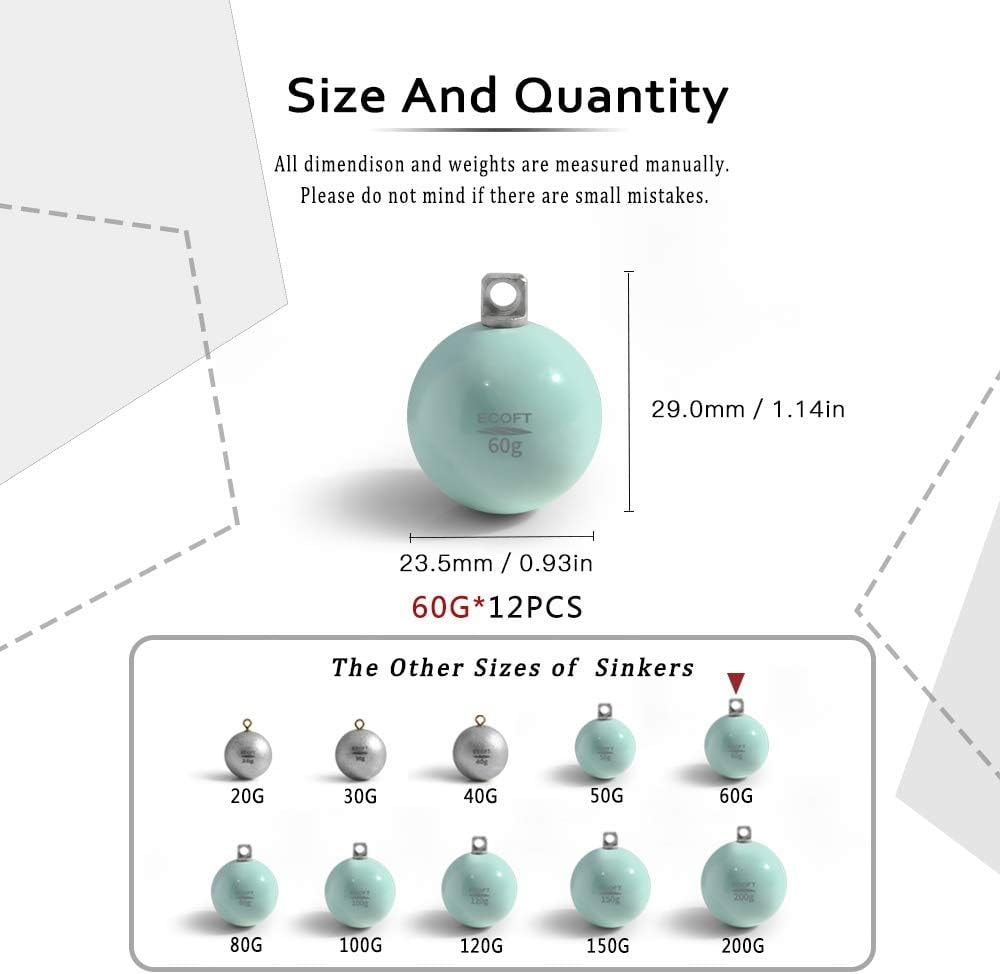
ECOFT. lead free sinkers (shame about the plastic spray coat ;)
Sharing experiences and recommendations can provide valuable insights and support as you transition to eco-friendly fishing practices.
Benefits of Sustainable Fishing Practices
Protecting Marine Life
By using biodegradable and plastic-free gear, you're directly contributing to the protection of marine life. Reducing plastic pollution helps preserve the delicate balance of marine ecosystems, ensuring healthier habitats for fish and other aquatic creatures.
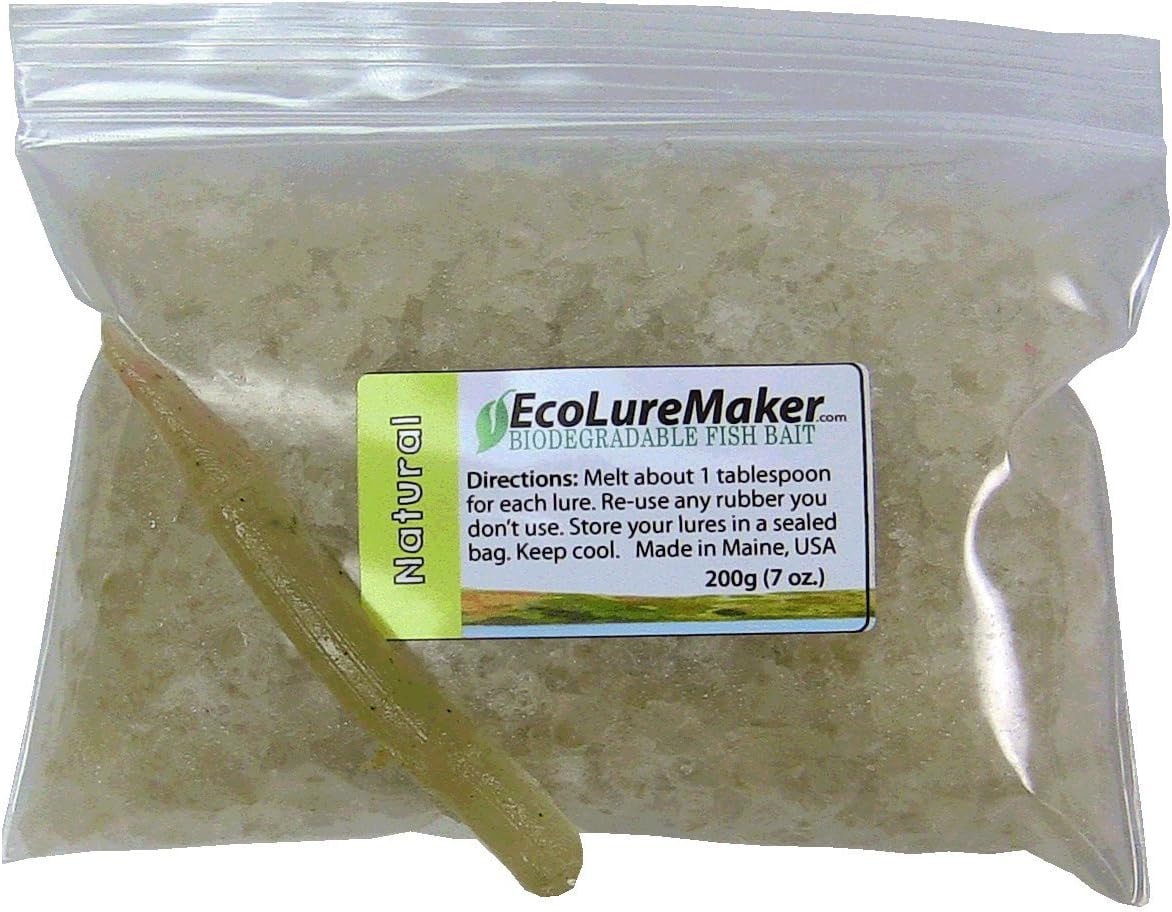
EcoLureMaker. biodegradable fish lure, eco friendly (bag might be plastic)
Promoting Healthier Oceans
Every piece of sustainable gear used is one less piece of plastic polluting our oceans. Healthier oceans contribute to the overall well-being of the planet, supporting biodiversity and combating climate change. Your choice of gear can make a meaningful difference.
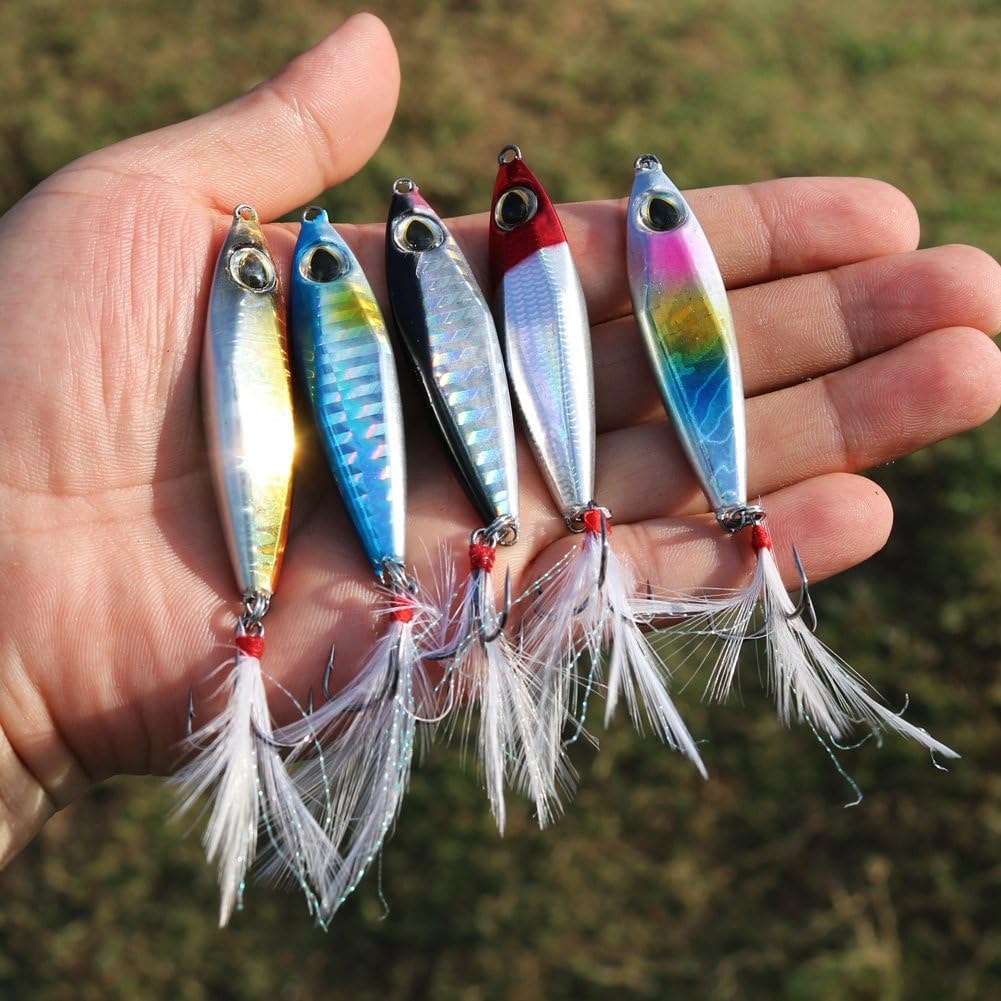
SOUGAYILANG. metal/feather fishing lures
Setting an Example
When you choose sustainable fishing gear, you set a positive example for others in the angling community. Your actions can inspire fellow anglers to adopt eco-friendly practices, amplifying the impact and fostering a culture of sustainability within the sport.
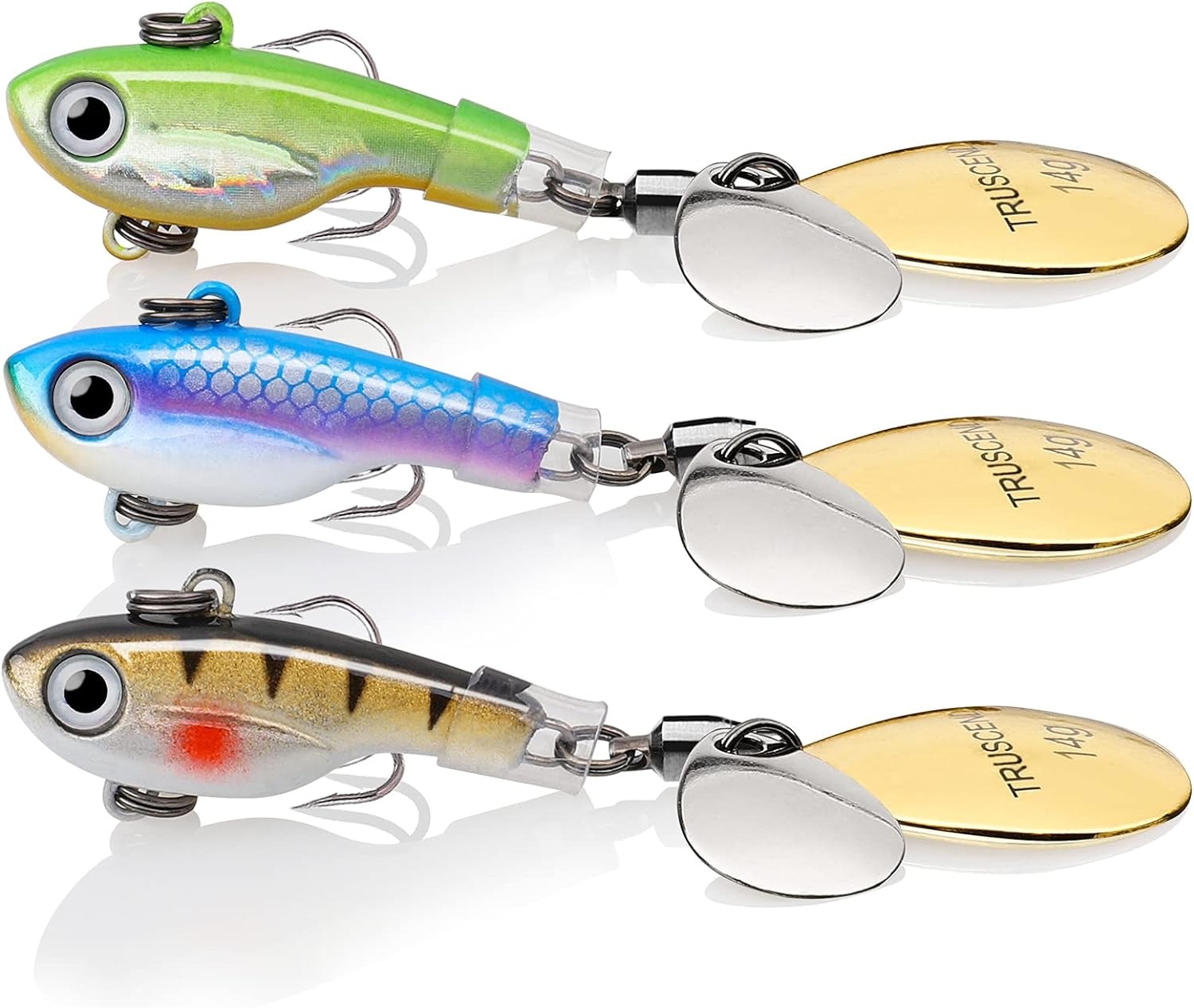
TRUSCEND metal rooster tail spinning lures
DIY Eco-friendly Fishing Gear Ideas
Homemade Biodegradable Lures
Get creative and make your own biodegradable fishing lures using materials like wood, feathers, and natural fibers. Not only is this a fun project, but it also allows you to customize your gear to suit your fishing style and preferences.
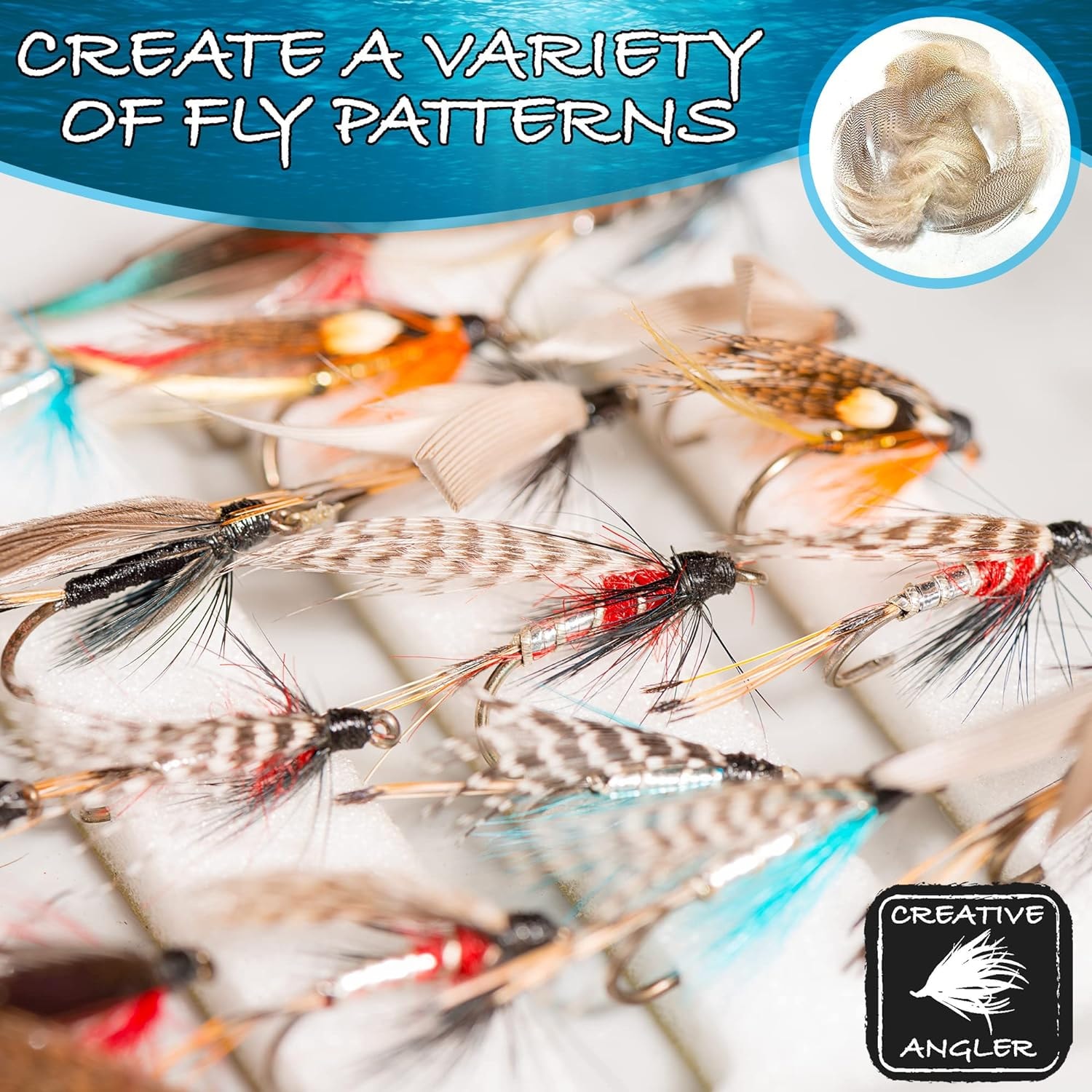
Creative Angler Store. natural fethers for tying flies
Upcycling Old Gear
Instead of discarding old fishing gear, consider upcycling it. Transform old hooks, lures, and lines into new creations. This reduces waste and gives your gear a second life, contributing to sustainability.
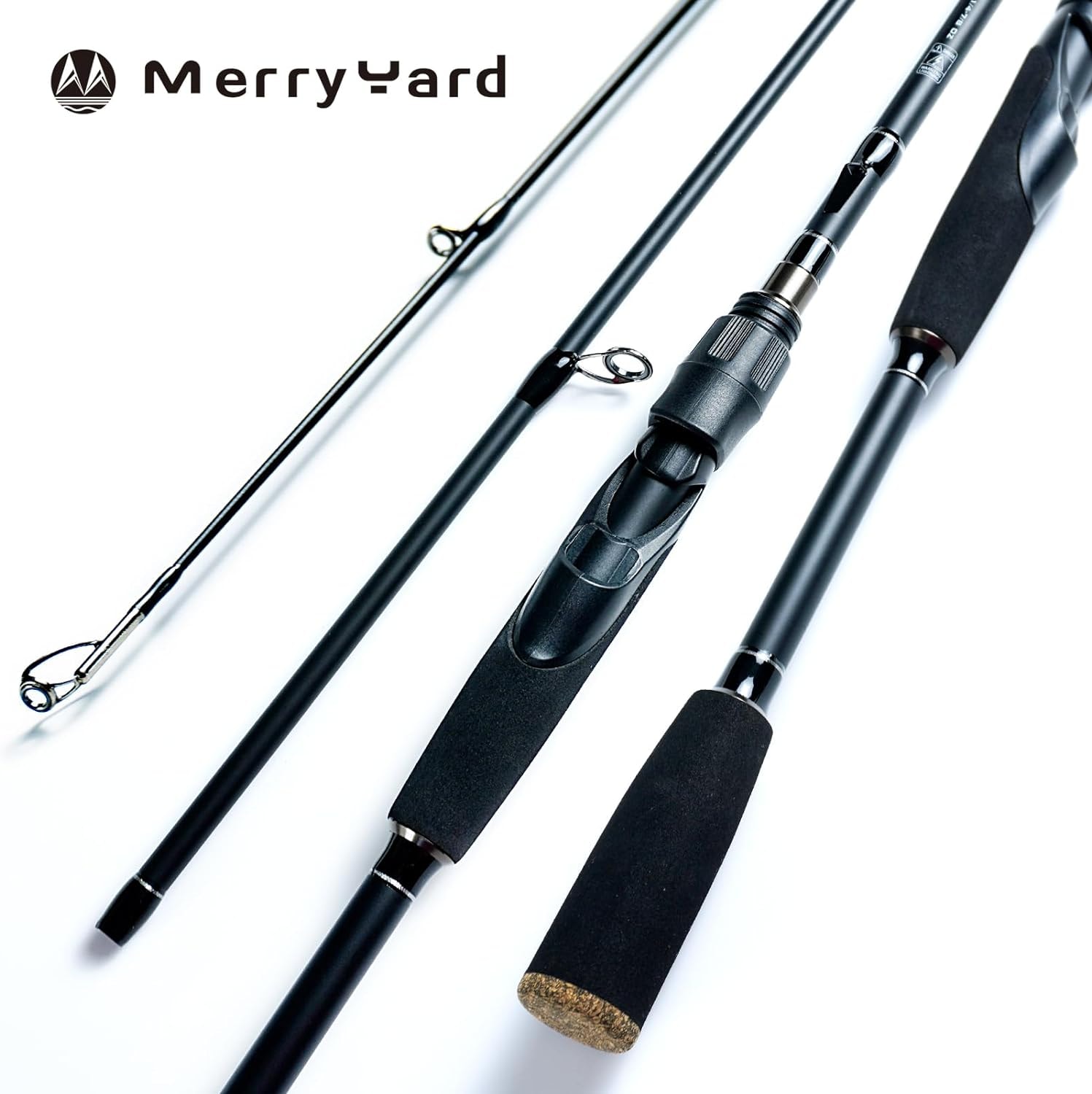
MerryYard stainless steel graphite casing pole
Sustainable Storage Solutions
Craft your own tackle box from sustainable materials like bamboo or reclaimed wood. Personalizing your storage solutions not only reduces plastic use but also adds a unique touch to your fishing setup.

LURESMEOW. metal lures
Engaging the Next Generation of Anglers
Educational Initiatives
Teach younger anglers about the importance of sustainable fishing practices. Share knowledge about the impact of plastic pollution and the benefits of using eco-friendly gear. Instilling these values early on can create a generation of responsible anglers.
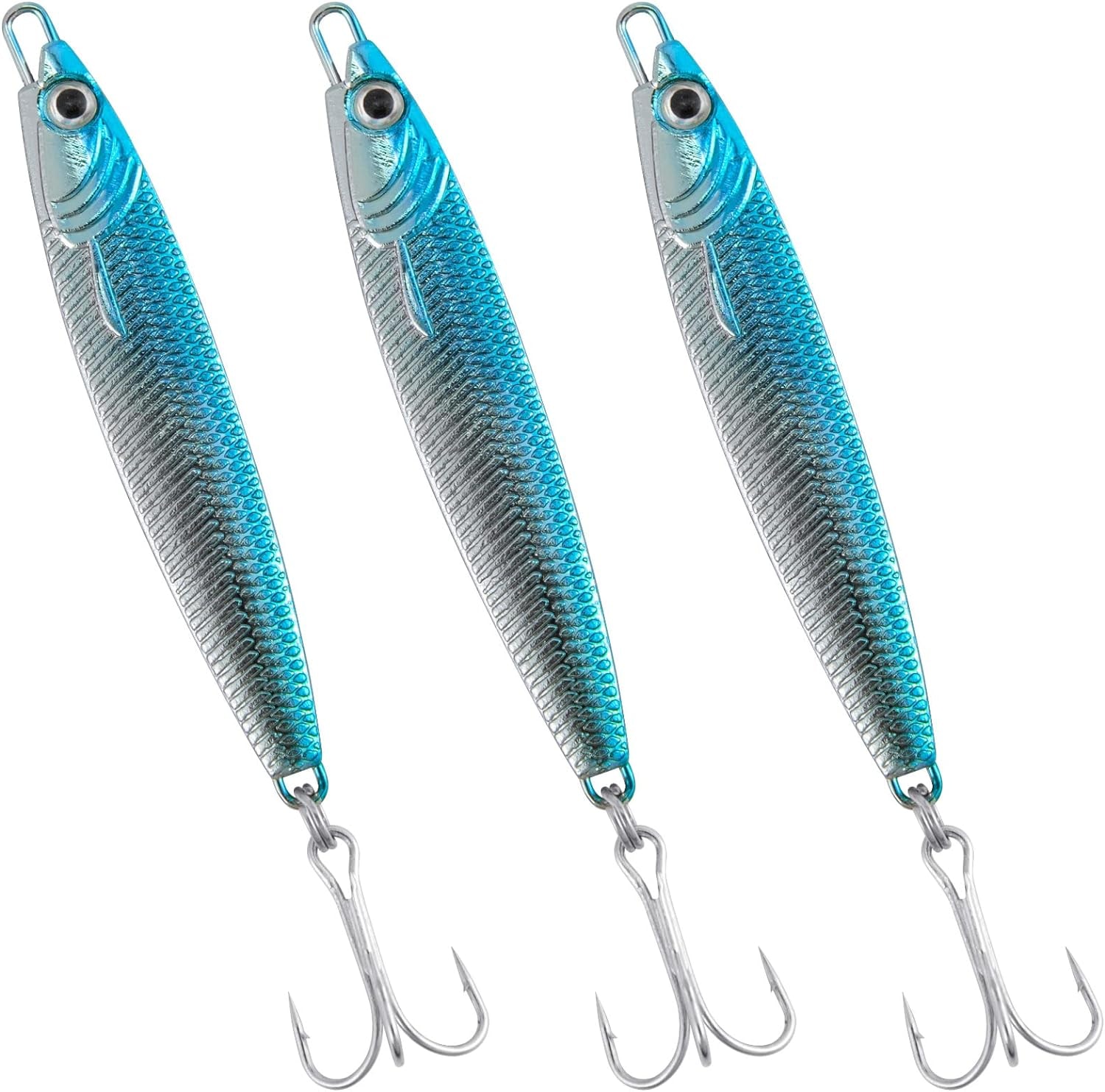
Dr Fish Store. metal surf fishing lures
Family-friendly Fishing Events
Host or participate in community fishing events that promote sustainable practices. These events can include workshops on making biodegradable lures, demonstrations of eco-friendly gear, and educational sessions on marine conservation.
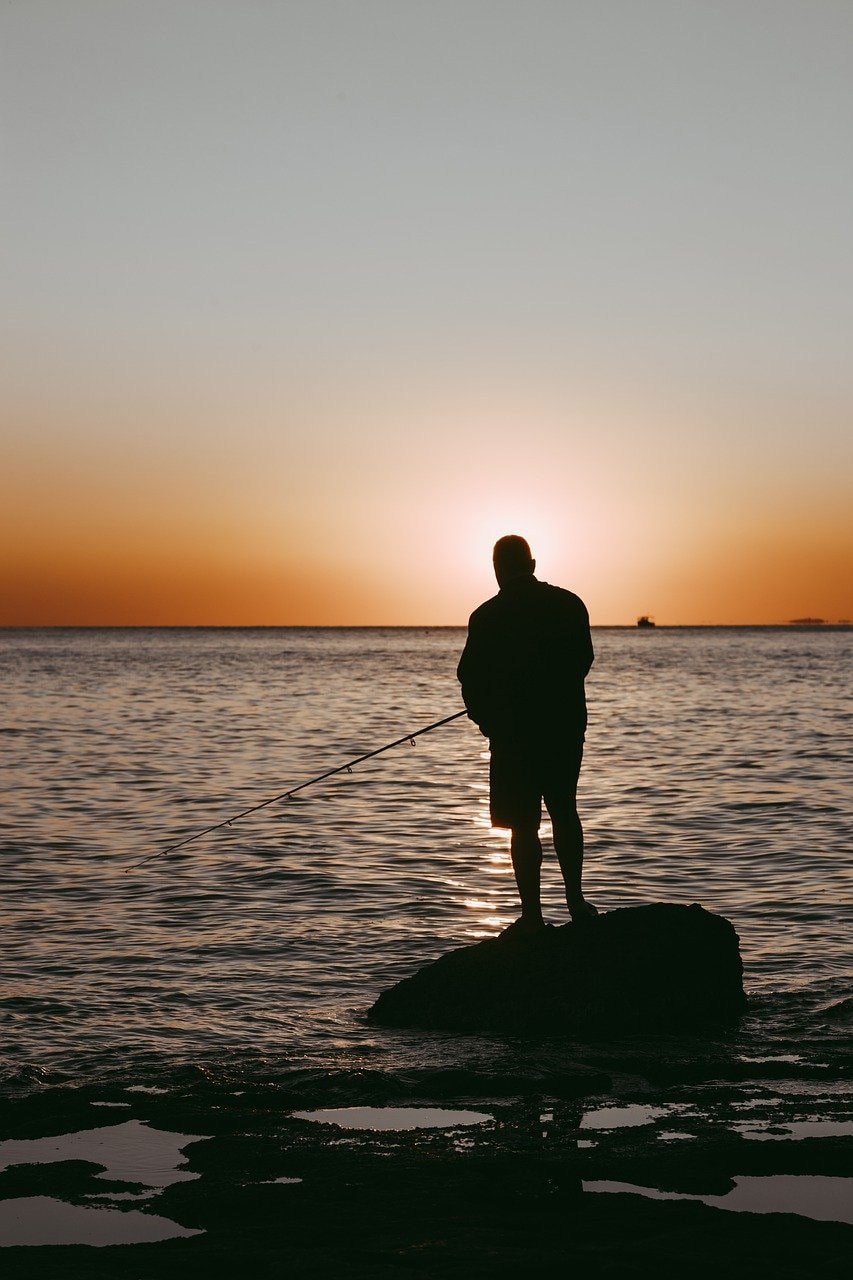
Youth Programs
Support or volunteer with youth programs focused on fishing and environmental education. Engaging with young anglers and teaching them about sustainability fosters a love for the sport while encouraging responsible habits.

The Future of Sustainable Fishing Gear
Innovations on the Horizon
The field of sustainable fishing gear is constantly evolving. Researchers and manufacturers are developing new materials and technologies to improve the performance and environmental impact of fishing gear. Stay informed about these innovations to keep your gear updated.
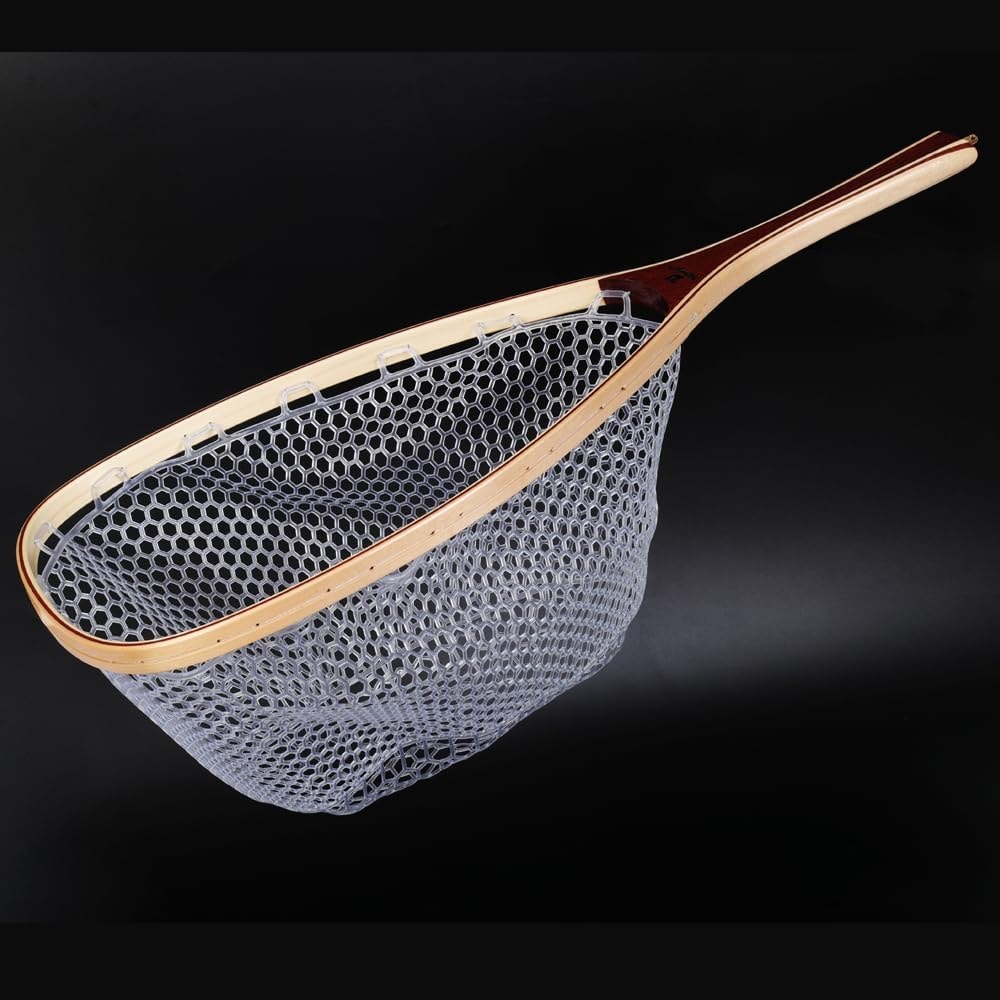
Kylebooker. rubber mesh landing net
Industry Collaboration
Collaboration within the fishing industry is essential for advancing sustainable practices. Companies, conservation organizations, and anglers working together can drive positive change and create a more sustainable future for the sport.
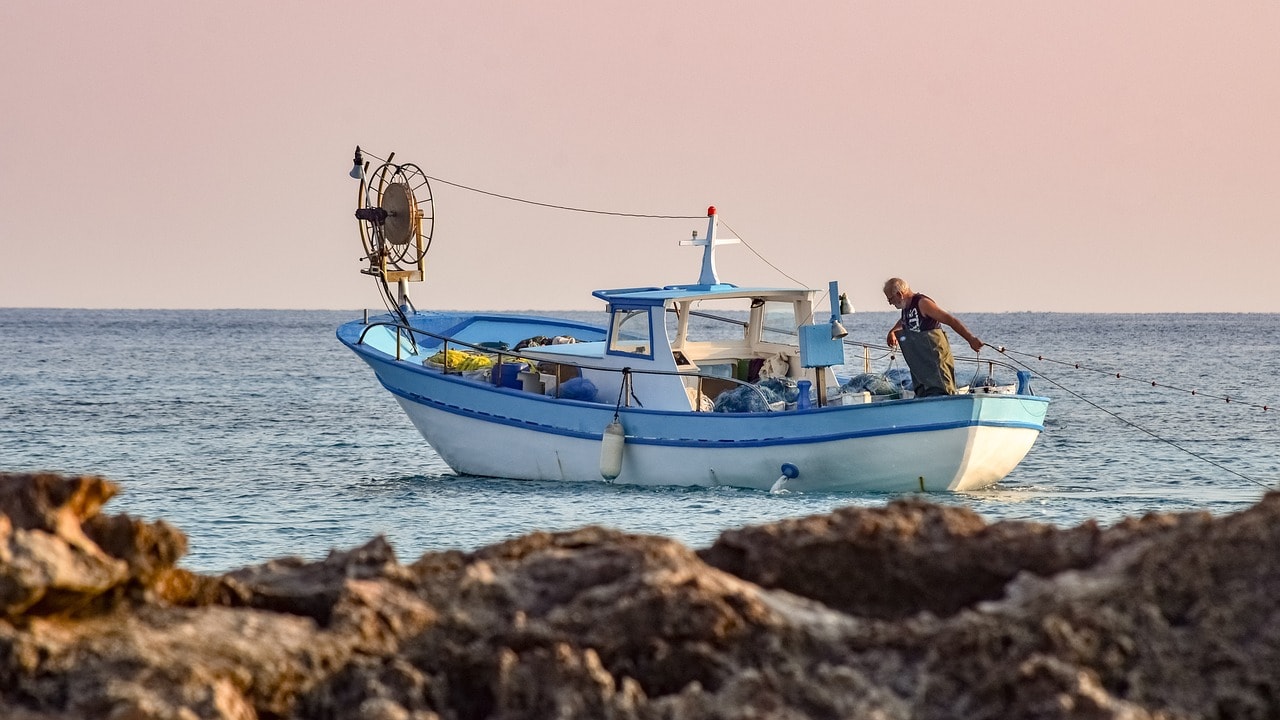
Personal Commitment
Your commitment to using sustainable fishing gear contributes to a larger movement. As more anglers adopt eco-friendly practices, the demand for sustainable products will grow, encouraging further innovation and accessibility.
If you need to pack straws on your boat for your drinks, make sure they are Plastic-Free Straws
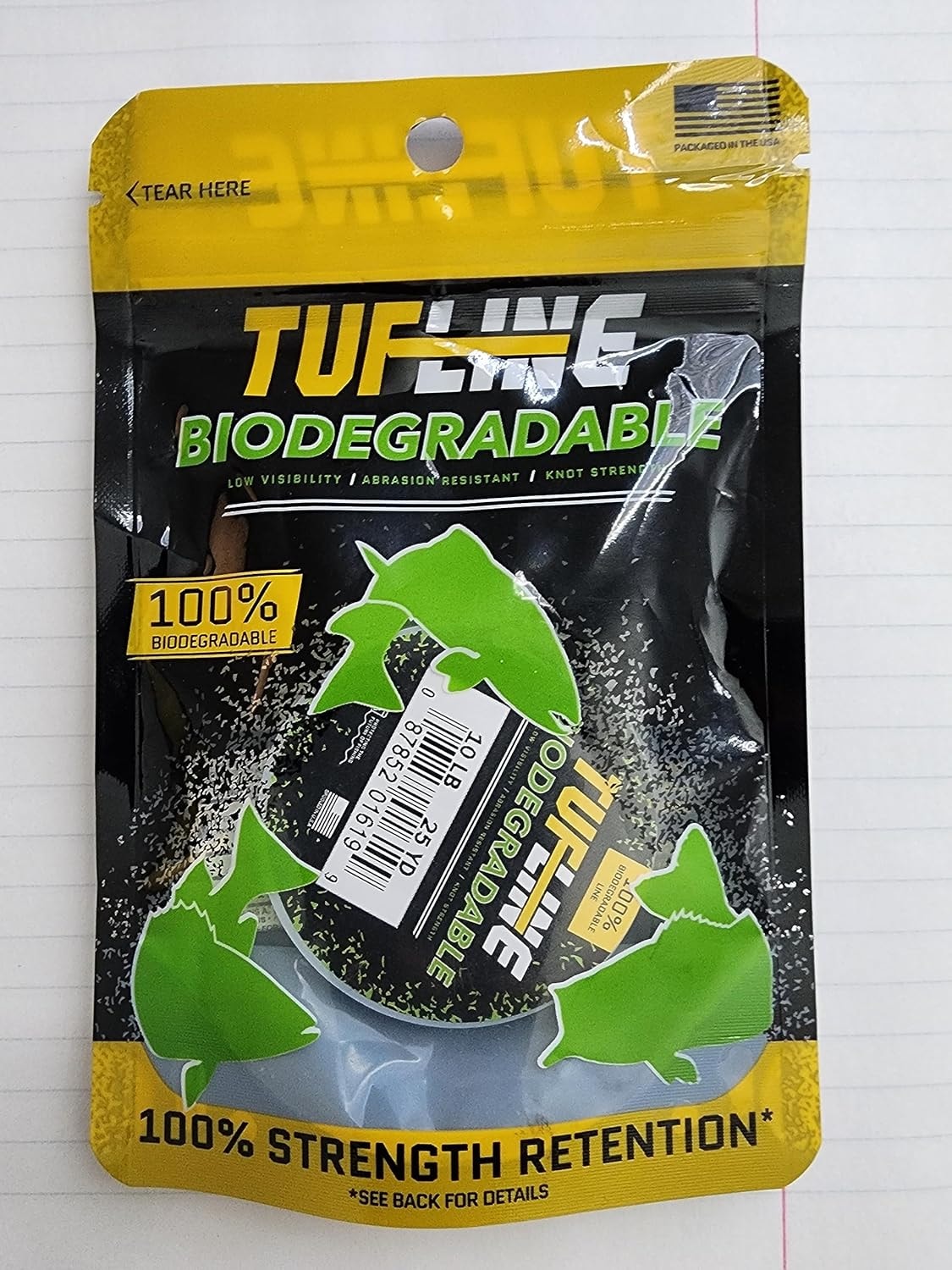
Tuf Line biodegradable 10lb tess, more option from the Tuf Line Store
Switching to biodegradable fishing lines and other plastic-free fishing gear is a simple yet powerful way to protect the waters you love. By making informed choices and supporting sustainable brands, you can enjoy your favorite pastime while minimizing your environmental impact.
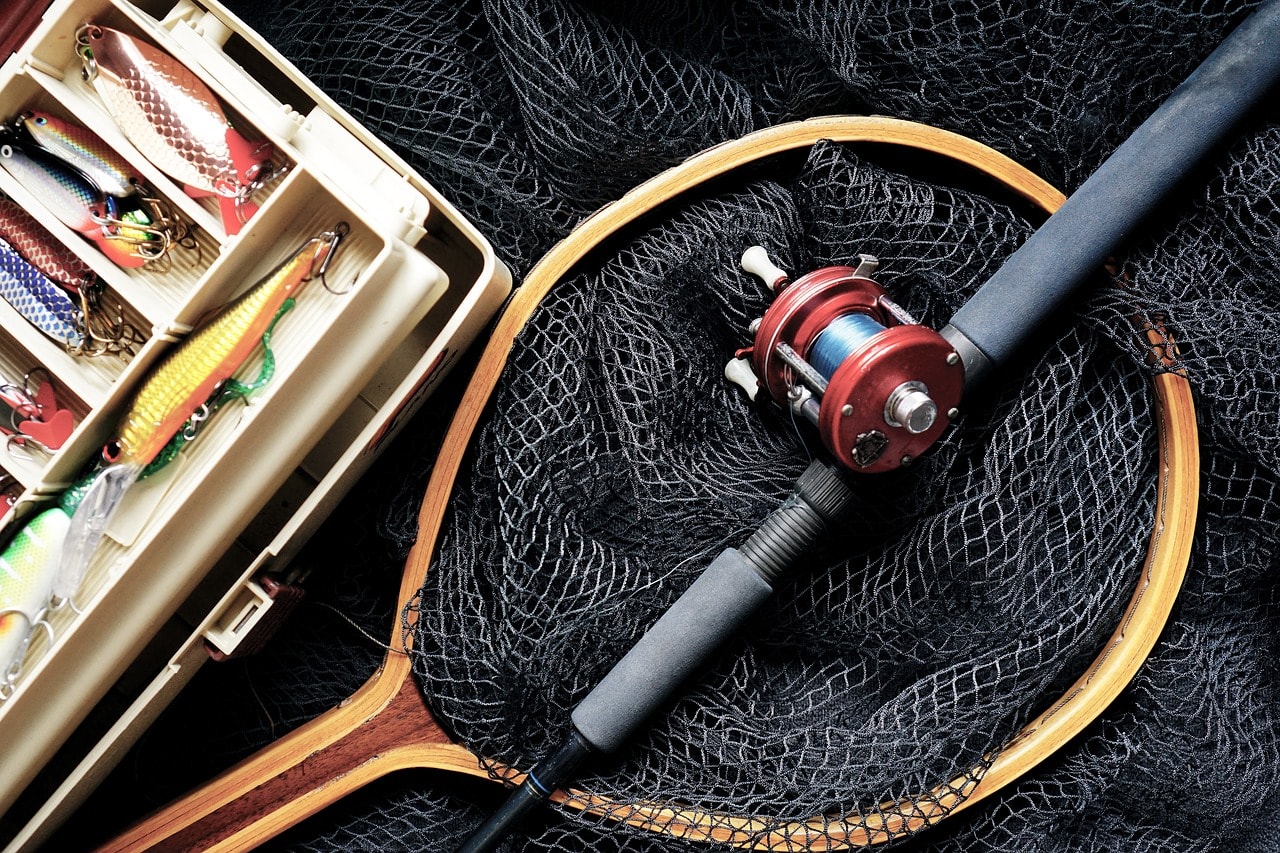
Ready to make the switch? Explore the selection of eco-friendly gear and join the community of anglers committed to preserving our planet. Together, we can reel in a brighter, more sustainable future.
The Importance of Eco Friendly Fishing
The Impact of Traditional Fishing Gear on the Environment
- Plastics can be toxic and pollute the environment, harming animals that eat them.
- Plastics break down into microplastics, which can be ingested and cause harm to wildlife.
- Plastics can take hundreds of years to break down, increasing the harm they cause.
- Many anglers are using biodegradable gear to reduce the environmental impact of boating and fishing.
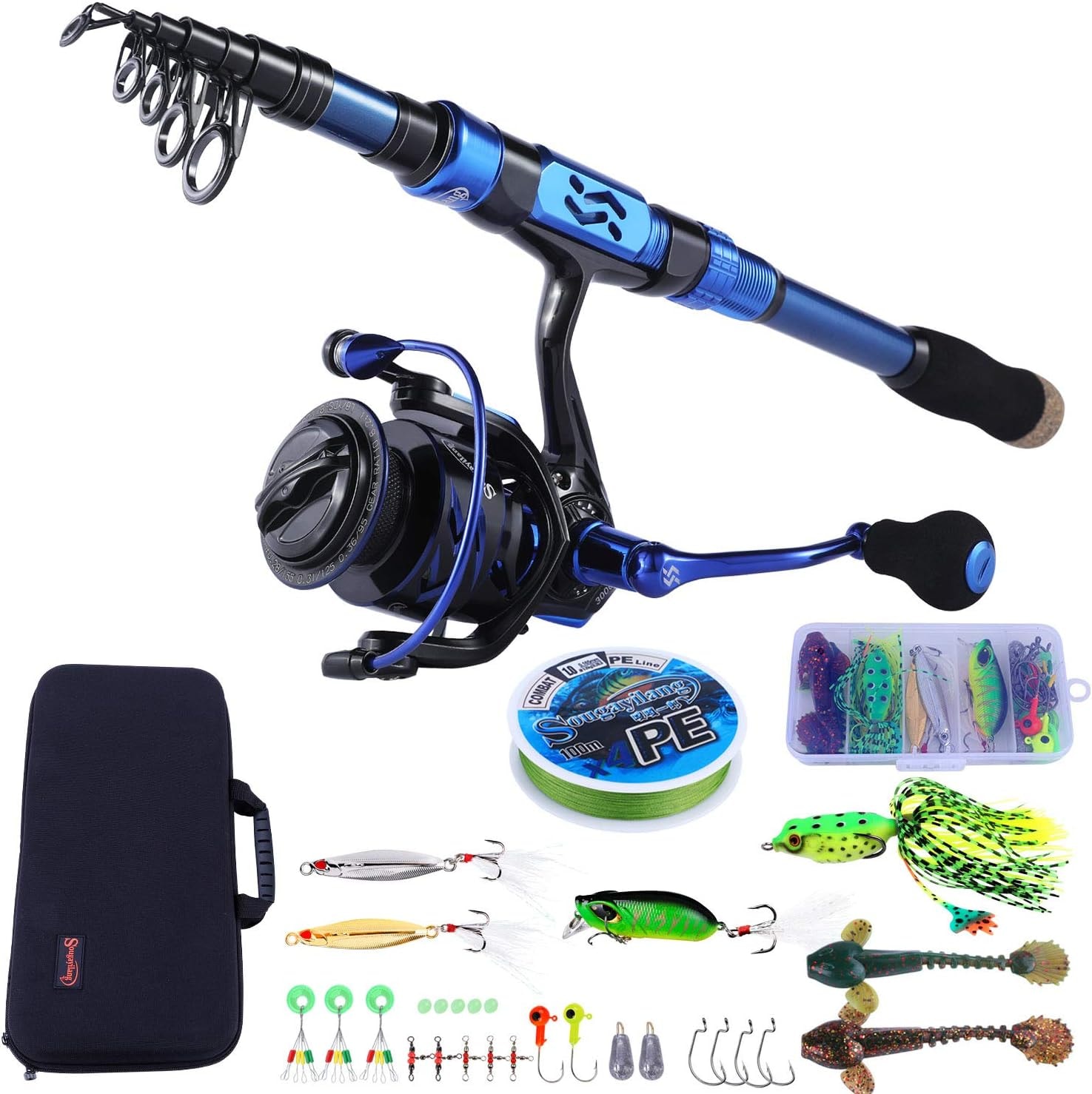
Soujayilang carbon fiber pole (about as eco-friendly synthetic as you can get besides wood or stainless steel. Avoid all fiberglass or flurocarban rodes or line.
A Most Fascinating Development is a Fishing Pole Made From Carrots!- (I Kid You Not! Check it Out.))
The Benefits of Switching to Biodegradable Options
- Using biodegradable gear and being intentional on the water can help reduce the impact of boating and fishing on the environment.
- Proper disposal of tackle and litter can also help reduce the harm to the environment. Use Biodegradable Trash Bags
- Upgrading boat hardware and being mindful of waste can also help reduce the impact of boating and fishing on the environment.

Soujayilang. graphite fly fishing pole (graphite is fairly eco-friendly too)
Biodegradable Lures: A New Era in Sustainable Fishing
- Biodegradable lures pose less of a threat to the environment, fish, and other aquatic creatures.
- Biodegradable soft lures are available, which can dissolve in an hour or so.
Choosing the Right Biodegradable Fishing Line for You
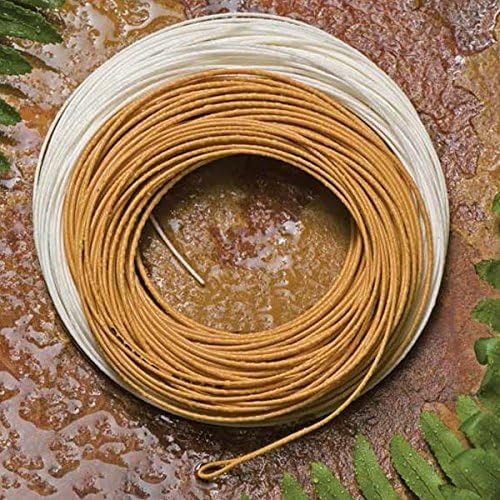
Royale Wulff. bamboo fly line
Factors to Consider When Selecting a Biodegradable Fishing Line
- Consider the environment when choosing fishing gear to ensure a sustainable future for fisheries.
- Fishing gear can have a significant impact on the environment, so choose eco-friendly options.
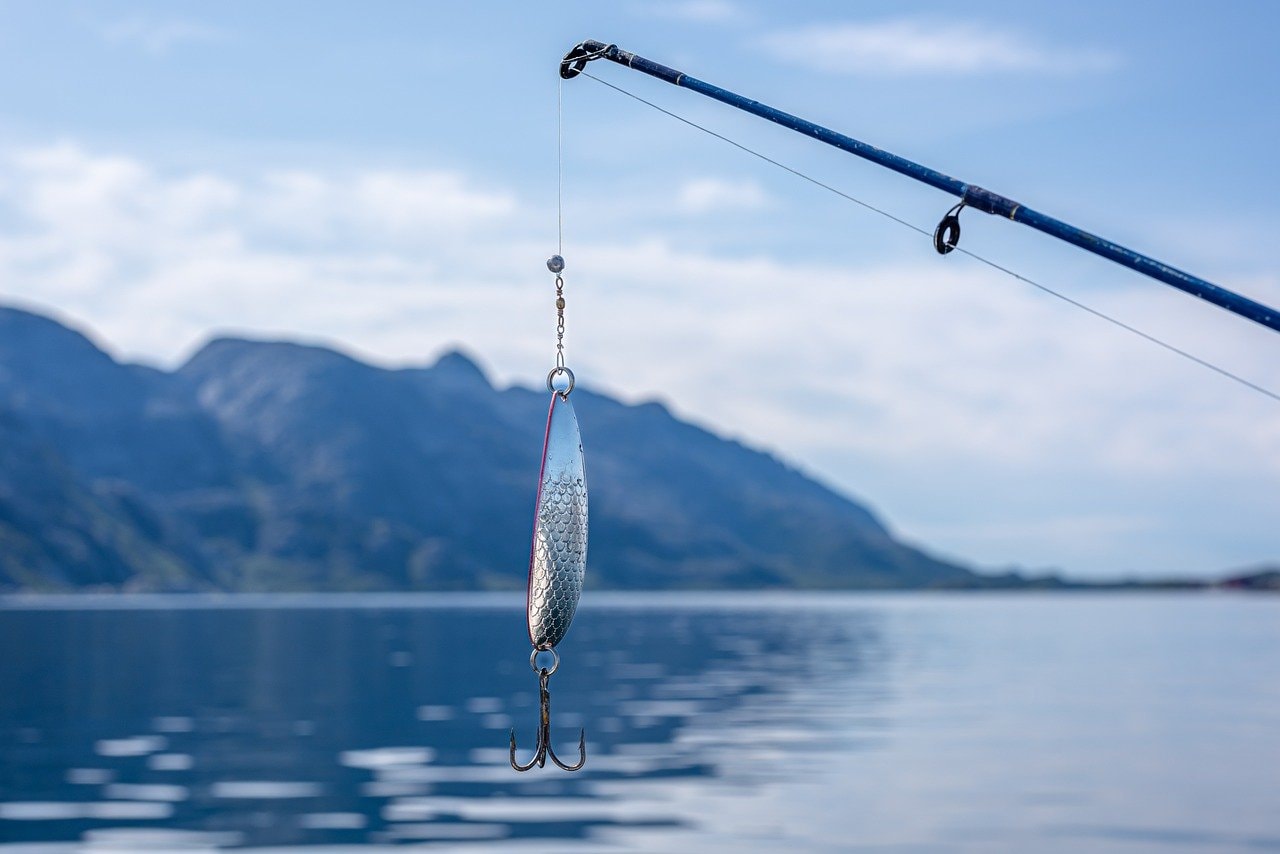
Tips for Getting the Most Out of Your Biodegradable Fishing Line
- Practice eco-friendly fishing by choosing the right lures for the species and avoiding exhaustion.
- Pack Your Fishing Lunch In Plastic Free Lunch Bags
- When catch-and-releasing, use barbless circle hooks and keep the fish wet to increase survival chances.
Making a Greener Catch with Biodegradable Fishing Lines and Lures
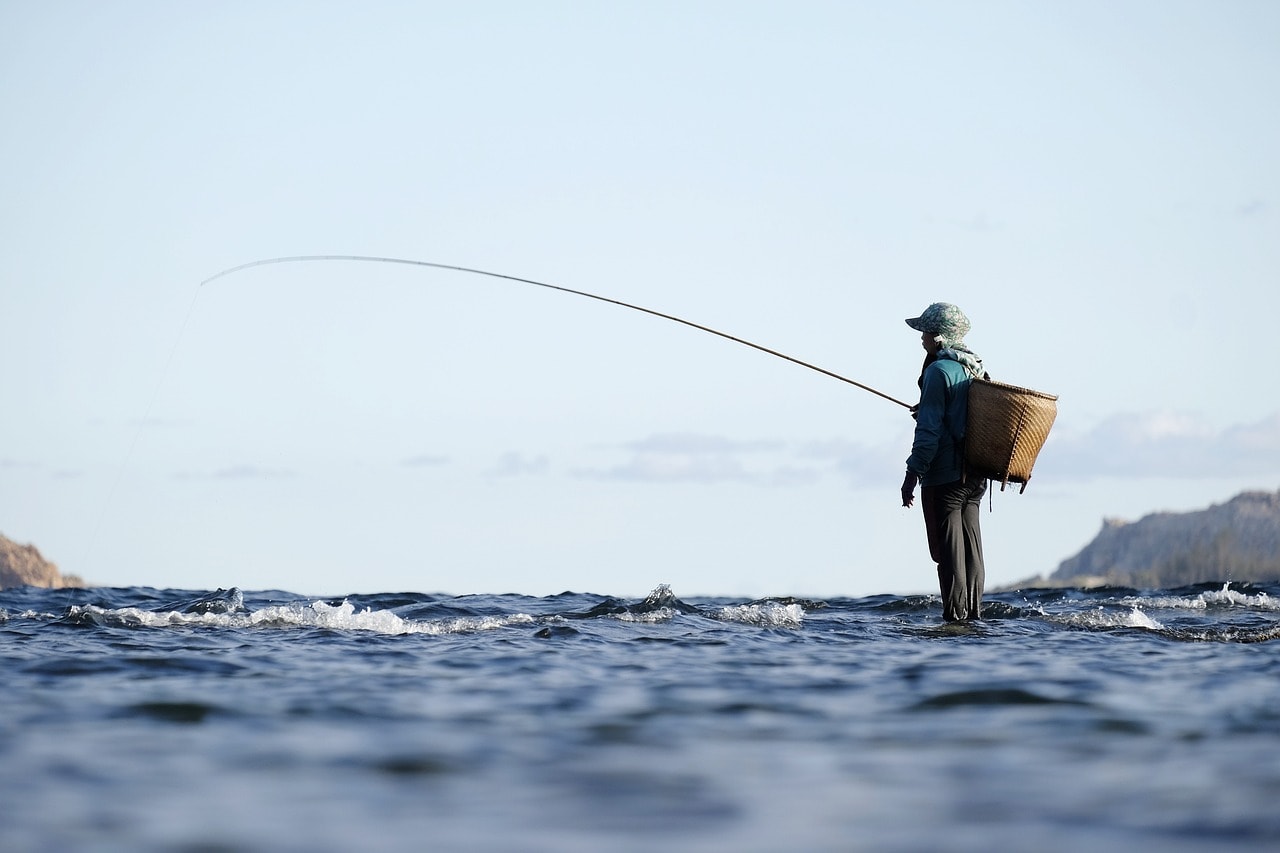
The Benefits of Biodegradable Fishing Lines for Anglers and the Planet
- By being mindful of your impact, you can help preserve your favorite fishing spots for future generations.
- Fishing can have an impact on the environment, but you can reduce your footprint by selecting sustainable fishing gear.
FAQs
What materials are used in biodegradable fishing lines?
Biodegradable fishing lines are typically made from materials like polylactic acid (PLA) or other plant-based polymers that break down more quickly than traditional plastics. These materials provide the strength and durability needed for fishing while being environmentally friendly.
Why should I use biodegradable fishing lines?
Using biodegradable fishing lines helps reduce the long-term environmental damage caused by traditional plastic lines, which can take hundreds of years to break down. Biodegradable lines decompose more quickly, minimizing harm to aquatic life and ecosystems.
What are plastic-free fishing lures?
Plastic-free fishing lures are designed to minimize environmental impact by using materials that do not contribute to plastic pollution. These lures are typically made from sustainable and biodegradable materials such as wood, metal, or plant-based composites.
Are plastic-free fishing lures as effective as traditional lures?
Yes, plastic-free fishing lures are designed to be just as effective as traditional lures. They come in a variety of shapes, sizes, and colors to attract different types of fish, and they perform well in various fishing conditions.
Are there any disadvantages to using biodegradable fishing lines?
While biodegradable fishing lines offer many environmental benefits, they may have a shorter lifespan compared to traditional plastic lines. It's important to store them properly and check for any signs of wear before each use to ensure optimal performance.
For more information:

